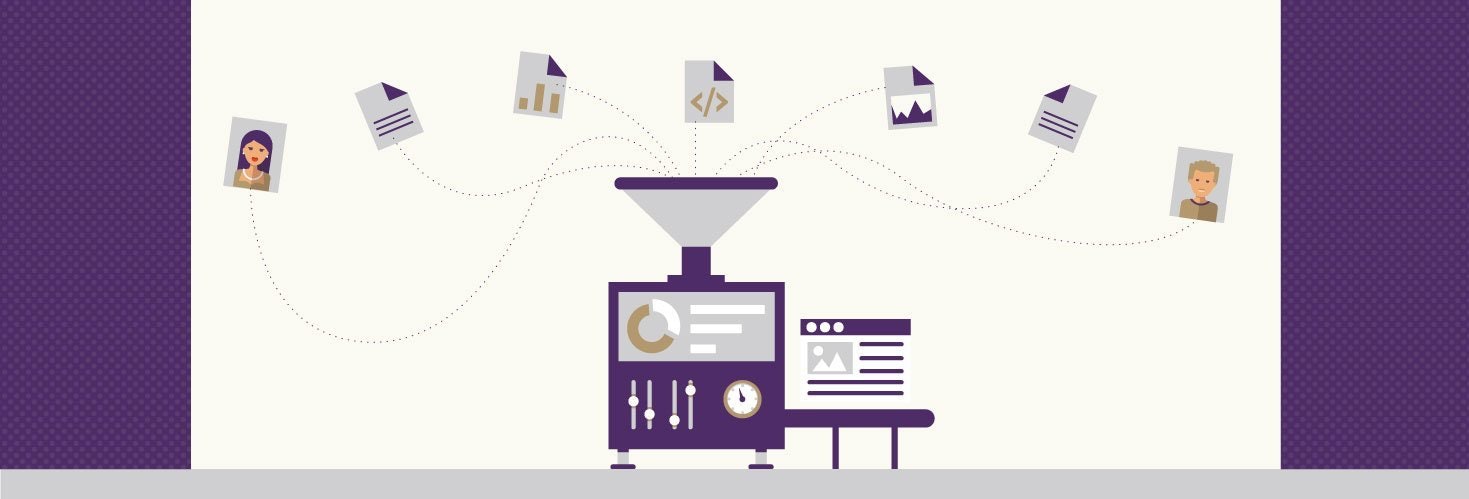Often the toughest assignments for a writer aren’t the long ones. Research and some elbow grease take care of a lengthy white paper or a big website. But just upping the effort level won’t help when you have a maximum word or character count to stay under. It takes thought, planning, and maybe even a little guile.
A landing page isn’t quite as short as a tweet or a CTA or an email subject line, but it does pose many of the same issues. The point of conversion is the last, most critical time that a marketer can convince a reader to buy in. There’s a form right next to the copy, and the words you choose there could be the ones that get your audience off the fence. Which side of the fence they come down on is up to you.
So how do you make sure people convert once they come to your landing page?
Talk to your audience
Before you even start the initial stages of concepting a campaign, you need to know the audience to whom you’re speaking. Every part of the campaign should be informed by that information – it’s a non-negotiable. And of course, that applies to your landing page.
Your audience depends somewhat on what you’re selling. When it’s full-service information technology solutions for businesses, you’re not going to be talking to a random consumer or layperson. You’ll be selling to IT experts, and to CFOs and CEOs. But you’re not selling to both at once.
One way to make sure your readers don’t convert is to put copy in front of them that fails to match their pain points. Putting together a landing page that’s aiming to hit all possible audiences will end up making it muddled and dull, and appealing to nobody. Missing the mark and hitting the wrong audience will lead to failure as well.
Identify the specific audience portion that you want to target, and don’t let it balloon from there. Write language that caters directly to them, calling out one or two of the specific pains that your research has shown they feel (and that the product or service can solve). If you have more than one audience that you want to target, that’s fine – but do it in multiple landing pages, and push the right page toward the right audience.
Work within your campaign
With all the time you spend (rightly) thinking about the audience and their pain points, it can be easy to get lost and forget exactly what it is you’re doing: getting someone to convert by downloading a white paper or eBook, or by participating in a webinar or a free trial of your product.
If a reader gets to the end of the copy on your landing page and they’ve forgotten what’s going to happen after they fill in the form and hit “submit,” that’s a problem. And it probably means they won’t actually complete the conversion process.
The best way to make sure you don’t lose that part of the message is to focus on what your prospect is getting. Not “a webinar,” but what that webinar will do for them. What information will they learn from your content? How will it help them grow their business, or solve the problems they’re facing? Sometimes it can be easy to fall in the trap of talking too much about what you have, rather than what they’ll get. That makes it a lot easier to drift away from the point.
Also, think about what exactly you’re offering. Most of the time it’s the same old stuff, and each advertiser fits in pretty well with the rest of its industry. But coming up with an offer that’s unique and interesting can get a landing page up to ten times the conversions of a more run-of-the-mill offer.
Think about what your audience is looking for and give that to them, but be sure that the foundation remains the content you’re sharing.
Test, test, test
Guesswork won’t get the job done. Plenty of seemingly amazing campaigns that have no reason to fail have failed, and many more will for as long as the marketing industry exists. It’s hard to predict with full certainty what will work and what won’t. That’s why you can’t rely on any one thing to get you to your goal.
Luckily, in the digital age, it’s easy to “choose both,” so to speak, or even more. Both A/B testing and multivariate testing give you the ability to try a number of things at once, whether it’s different designs, different copy, even just a little tweak here and there – just to see what does and doesn’t make a difference.
Test one idea against another, or test three or four or even more and see what idea comes out on top. Then do that again, and again, and again. You’ll never get it perfect. But you’ll always get it at least a little bit better.
Finish the job you’ve started
When someone visits your landing page, the groundwork of the conversion has already been laid. You’ve gotten the ball to the goal line, you just need to punch it in. But any football fan will tell you that the last yard can often be the toughest. Make sure your own landing page content isn’t the thing that ends up stopping you on fourth and goal.
Think about the problems your specific audience faces. Tell them how your content will solve them, or at least start them on that path. Point them towards the form. If you can accomplish all that, your conversion rate goals should be well within reach.





